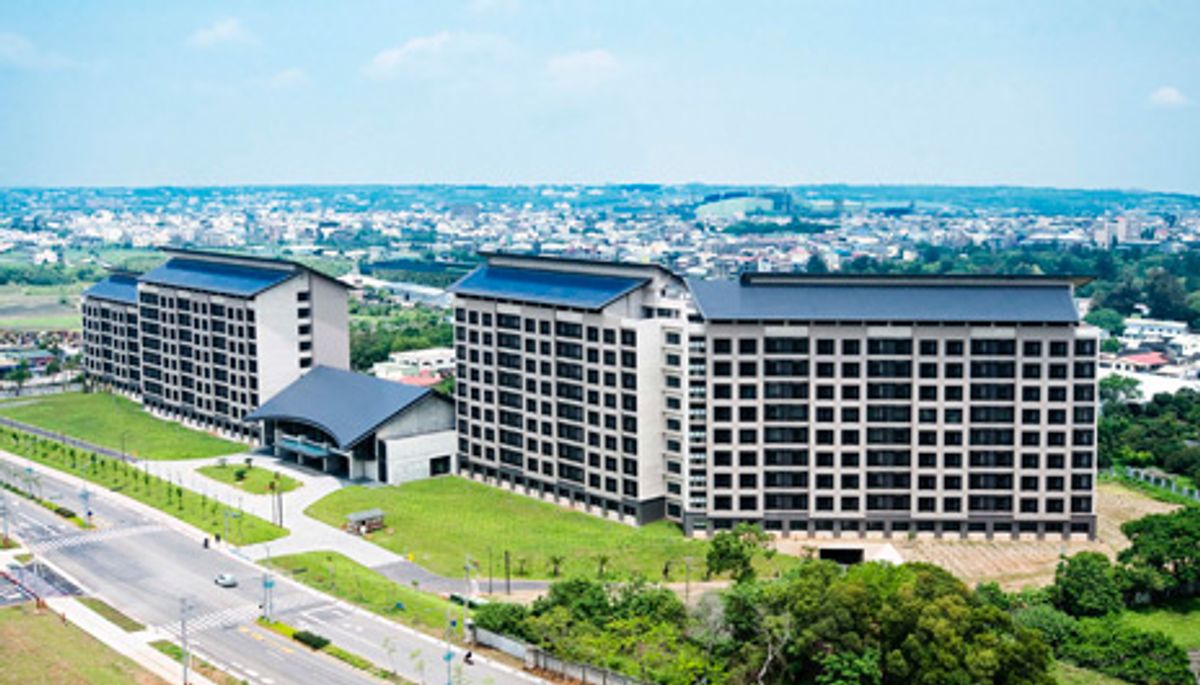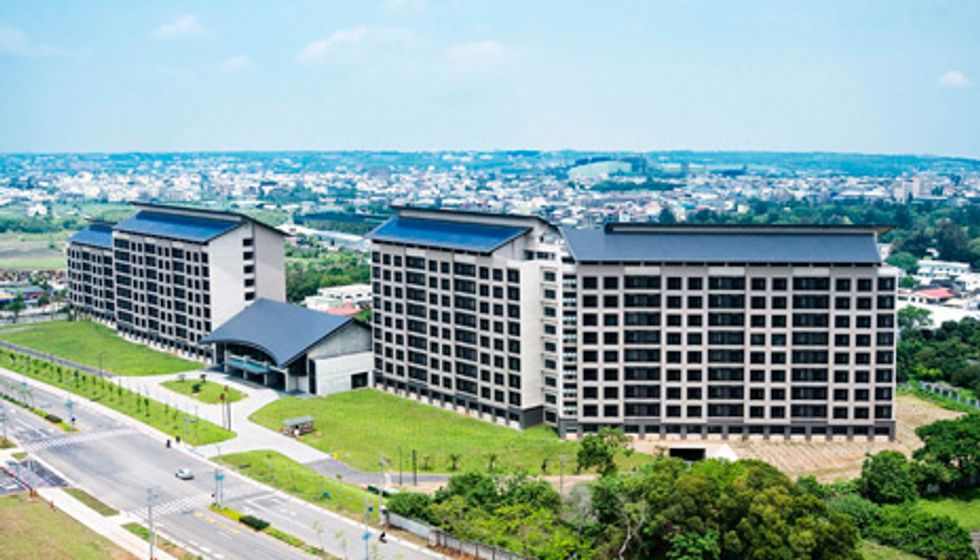9 September 2011— It’s hard to miss the message as you enter the grounds of AU Optronics’ newest fab in Houli, Taiwan: The driveway winds through a plantation of
34 000 slender saplings. The company, Taiwan’s biggest producer of thin-film transistor liquid crystal display (TFT-LCD) panels, has gone green. Really green.
The young forest of camphorwood and cedar trees is one of the more visible parts of the world’s first fab to meet the strictest global green building standards, earning a Leadership in Energy and Environmental Design (LEED) platinum certification. The fab is one of only seven industrial buildings in the world to achieve LEED platinum status, according to the U.S. Green Building Council, which administers the LEED program, and the Houli site is the only high-tech manufacturing facility on that short list.
That AU Optronics is alone at the top is not surprising: LCD production, just like chip manufacturing, typically consumes a great deal of energy and water, and the use of both must be minimized to hit the platinum level. Increasing efficiencies in the manufacturing process were key to the company’s success, but measures like planting trees and installing solar panels on worker dormitory buildings helped too.
Jason Lin, a senior engineer in AU Optronics’ environment, safety, and health division, explains that the Houli fab uses 50 percent less energy than the LEED standard for a building of its size. Most of the energy savings come from innovations in the equipment used to make the TFT-LCD arrays, before they are packaged into finished displays. For example, a typical compressed dry-air system, used in cleaning and other processes, consumes 20 percent of the total energy in a fab, Lin says. But by simply switching to a dual-pressure design, which allows for weak or strong blasts of air as necessary, AU Optronics reduced the compressed-air system’s energy consumption by 15 percent.
Other improvements include a waste-heat recovery system for the fab’s ovens, which typically run at around 200 °C, and a water recovery system, which recycles 90 percent of the water from the manufacturing process for other uses around the site. Lin says that more than 70 percent of the machines on the production line have digital electricity and water usage meters, which send data to a central control room. By tracking which machines are the biggest energy and water hogs, the company can continue to tweak the process for higher efficiencies.
Katie Chen, a spokeswoman for AU Optronics, says the company’s green mission wasn’t the mandate of any one person at the company but rather ”a consensus decision” based on both principle and economics. Since 2008, the company has built two fabs that have met the LEED gold standard—another LCD facility in Taiwan and a solar panel factory in China—in addition to the platinum-certified fab. The company is pleased with the energy savings at the new fabs, says Chen, and is also proud to be able to verify the carbon footprints of its displays.
According to Chen, carbon footprinting is a selling point because it lets consumer product companies—AU’s customers—calculate the environmental impacts of a product throughout its life cycle. Consumers have grown more aware of the environmental impacts of the gadgets and devices they adore, thanks in large part to Greenpeace’s annual ”Guide to Greener Electronics.” The guide ranks companies like Apple and Samsung on everything from their products’ energy use during operation to their e-waste policies.
Contract-manufacturing companies like AU Optronics, which makes displays for most major consumer brands, aren’t facing the same public scrutiny, says Britt Harter of the consulting company Esty Environmental Partners. ”We’ve gotten to a point where customers understand that driving down their own energy use is a win-win,” he says. However, ”people aren’t yet asking, ’How was it made? Was it made in a green factory?’” The next stage, Harter says, is getting customers interested in the ”embedded energy” of a product.
Despite the absence of public awareness, Harter says the industry expects that consumer-product companies will eventually take more of an interest in the environmental impacts of their upstream suppliers. ”Right now, I’m not sure whether someone would buy your screen rather than your competitor’s screen based on this,” says Harter. But component manufacturers that have a ”great green story” are well positioned for the industry’s next environmental step. ”Consumer-product companies are just starting to look up their supply chain and are asking their suppliers, ’What are you doing to reduce your carbon footprint?’ ” says Harter.
AU Optronics isn’t waiting for its customers to ask for its green story—the company is going out to tell its story to whoever will listen. A promotional video about the LEED-platinum fab says that the company hopes to influence both its own suppliers and its customers to create a ”virtuous cycle” of new ideas and methods. As for the costs inherent in building a cutting-edge, energy-efficient fab, not to mention planting those 34 000 saplings, the company sees those costs as an investment in the future. Says Chen: ”Come back in 10 years and you will see a forest.”

